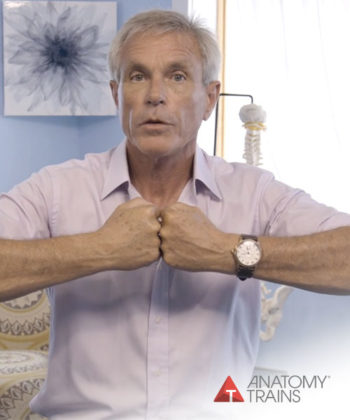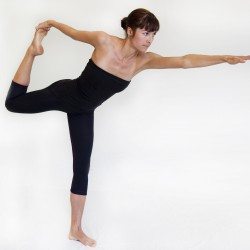When asked to summarise and synthesise all the various bits of information flying around the Fifth International Fascial Research Congress into a bit of advice, Dr Frank Willard (from the University of New England in Biddeford, Maine, by the way, over here in Berlin with us) said, simply, “Exercise.”
So many of the studies show that the degradation that come with ill use and age – the invasion of fat and fascia into the muscle space – can be checked and indeed reversed by exercise.

Go for your walk, go be Sisyphus, train for that half marathon you’ll never actually do. Health and movement are so related.
-Tom Myers, Nov. 2018
Source: Wroblewski A et al; (2011). Chronic exercise preserves lean muscle mass in masters athletes. Physician and Sportsmedicine 39 (3): 172-178
Phys Sportsmed. 2011 Sep;39(3):172-8. doi: 10.3810/psm.2011.09.1933.
Chronic exercise preserves lean muscle mass in masters athletes.
Wroblewski AP1, Amati F, Smiley MA, Goodpaster B, Wright V.
Link: https://www.ncbi.nlm.nih.gov/pubmed/22030953
Abstract:
Aging is commonly associated with a loss of muscle mass and strength, resulting in falls, functional decline, and the subjective feeling of weakness. Exercise modulates the morbidities of muscle aging. Most studies, however, have examined muscle-loss changes in sedentary aging adults. This leaves the question of whether the changes that are commonly associated with muscle aging reflect the true physiology of muscle aging or whether they reflect disuse atrophy. This study evaluated whether high levels of chronic exercise prevents the loss of lean muscle mass and strength experienced in sedentary aging adults. A cross-section of 40 high-level recreational athletes (“masters athletes”) who were aged 40 to 81 years and trained 4 to 5 times per week underwent tests of health/activity, body composition, quadriceps peak torque (PT), and magnetic resonance imaging of bilateral quadriceps. Mid-thigh muscle area, quadriceps area (QA), subcutaneous adipose tissue, and intramuscular adipose tissue were quantified in magnetic resonance imaging using medical image processing, analysis, and visualization software. One-way analysis of variance was used to examine age group differences. Relationships were evaluated using Spearman correlations. Mid-thigh muscle area (P = 0.31) and lean mass (P = 0.15) did not increase with age and were significantly related to retention of mid-thigh muscle area (P < 0.0001). This occurred despite an increase in total body fat percentage (P = 0.003) with age. Mid-thigh muscle area (P = 0.12), QA (P = 0.17), and quadriceps PT did not decline with age. Specific strength (strength per QA) did not decline significantly with age (P = 0.06). As muscle area increased, PT increased significantly (P = 0.008). There was not a significant relationship between intramuscular adipose tissue (P = 0.71) or lean mass (P = 0.4) and PT. This study contradicts the common observation that muscle mass and strength decline as a function of aging alone. Instead, these declines may signal the effect of chronic disuse rather than muscle aging. Evaluation of masters athletes removes disuse as a confounding variable in the study of lower-extremity function and loss of lean muscle mass. This maintenance of muscle mass and strength may decrease or eliminate the falls, functional decline, and loss of independence that are commonly seen in aging adults.
PMID: 22030953 DOI: 10.3810/psm.2011.09.1933
Recommended
How Fascia Moves
$25.00Get FREE access to this webinar by signing up for our email newsletter: https://www.anatomytrains.com/newsletter-signup/ There’s a lot of confusion out there about how fascia responds to various forms of stretch and training. In this webinar, Tom Myers clarifies the subject by outlining four key properties of fascial tissue (viscosity, elasticity, plasticity, remodeling) and how connective tissues… Read more
Add to cart





